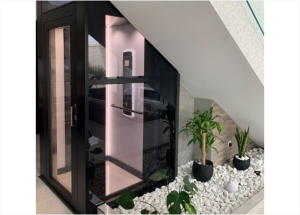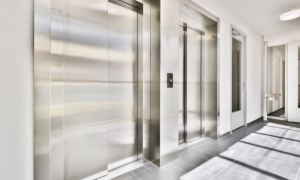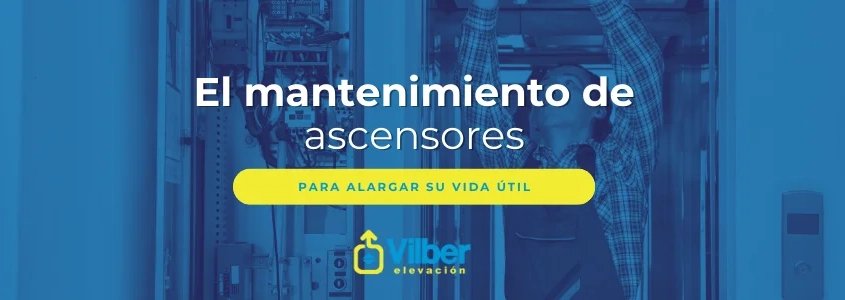Elevator maintenance to extend the equipment’s lifespan
The idea is simple: maintenance is not an expense, it is the guarantee that the elevator will last longer, fail less, and be safer. In this article, we explain, without technical jargon, what good maintenance gives you, what current regulations require, and how to choose a contract that truly fits your community, company, or home.
Why maintenance is worth it
A well-maintained elevator breaks down less and, when it does, it returns to normal faster. Behind this are routine tasks that make the difference: cleaning and lubrication, door adjustments, cable checks, limit switches and rescue systems, cabin communication checks… All of this reduces breakdowns, prevents “silly” stoppages, and keeps safety in place.
In addition, regular servicing extends the useful life: fewer parts replaced “in a rush,” more planned modernizations, and a better user experience (smooth leveling, soft starts and stops, doors that go unnoticed). And importantly, it helps you comply with regulations without surprises.

What regulations require today
-
Maintenance contract. The elevator owner must have one with an authorized maintenance company. The official inspection (“the OCA”) is contracted by the owner, not the maintenance company, and it serves to periodically verify the safety of the equipment.
-
Minimum on-site visits.
-
Most elevators: one inspection per month. Between one visit and the next, no fewer than 20 and no more than 45 days may pass.
-
Single-family homes and some small buildings (up to 3 stops and serving no more than 20 dwellings): one inspection every 4 months.
This is established by the current ITC AEM 1.
-
-
Periodic inspections by OCA (not performed by the maintenance company).
-
Every 2 years: buildings of public use (hospitals, hotels, shopping centers, stations, etc.) and industrial use.
-
Every 4 years: buildings with more than 20 dwellings or more than 4 served floors.
-
Every 6 years: the rest.
This is the minimum guideline set by the BOE.
-
-
Documented maintenance plan. All maintenance companies must have a maintenance plan for each elevator, in accordance with UNE 58720. The obligation came into force with the new ITC and granted one year of grace from its entry into effect (July 1, 2024) to have it ready (deadline: July 1, 2025).
-
If the periodic inspection has expired. The maintenance company must put the elevator out of service and report it if it is not carried out on time. That’s why it is vital to keep the schedule up to date.
-
Peace of mind: we handle alerts, the visit schedule, and remind you on time about OCA inspections, accompanying you on the scheduled day (you contract the inspection with the control body, but we don’t leave you alone).

What customized maintenance includes and why it matters
At Vilber Elevación we adapt the plan to how your elevator is used (traffic, user ages, schedules, environment) and to its condition (age, technology, door condition, stopping accuracy). Clearly and without fine print, our service covers:
-
On-site inspections at intervals set by the ITC (monthly or every four months depending on the case), and record of all actions performed —with a report delivered within 10 days— so you have full traceability.
-
Fault response with agreed response times and 24/7 rescue for trapped persons.
-
Fine door adjustments, cleaning and lubrication, cabin communication verification, safety tests, and leveling.
-
Spare parts planning (so that a door does not stop the building for a week) and advice when it is appropriate to modernize specific elements (e.g., an old door operator causing issues).
-
OCA support: pre-inspection, defect correction, and presence on the day of the control body visit (the OCA is independent).
How to compare two offers without getting lost
When you receive two “similar” quotes but with different prices, pay attention to these 7 key questions:
-
How many on-site inspections are included per year? (It must comply with monthly or every 4 months depending on your case).
-
Response times for faults and 24/7 rescue?
-
Doors: Are adjustments and lubrication included at each visit?
-
Parts: Which parts are covered and which are not? Is there an annual limit?
-
Reports and bulletins: Will you receive each action in writing within 10 days?
-
OCA support: Do they do a pre-inspection, are they present on the day of the OCA, and fix defects on time? (Remember: the OCA is contracted by you).
-
Transparency: clauses regarding price increases, contract duration, and exit conditions (with delivery of the maintenance log).
With this, you will clearly know which contract truly protects your equipment and your wallet.

Mistakes that shorten the elevator’s life (and how to avoid them)
-
“Savings” that skip visits. Skipping inspections breaks the preventive plan, increases breakdowns, and brings you closer to failing the OCA.
-
Dirty machine rooms and dust-filled shafts: accelerate wear and tear.
-
Misaligned doors: they are the number one cause of stoppages and calls.
-
Ignoring minor alerts (new noises, “wobbly” leveling, doors hesitating). If addressed early, they cost less.
Frequently Asked Questions
Can I freely choose the maintenance company? Yes, any authorized maintenance company can maintain your elevator; it does not have to be the one that installed it.
Who contracts the OCA? The owner of the elevator contracts it (community, company, or individual), not the maintenance company. We notify, prepare and accompany you on the day of the inspection.
How often is the inspection required? Depending on the building: 2 years (public/industrial use), 4 years (more than 20 dwellings or more than 4 served floors), and 6 years for the rest.
What happens if the inspection expires? The maintenance company must stop the elevator and report it. Better to avoid it by keeping the schedule up to date.
Is a maintenance plan mandatory? Yes. The maintenance company must have a plan for each elevator, according to UNE 58720; the ITC allowed one year from 1/7/2024 to implement it (deadline: 1/7/2025).
In summary, good maintenance is the short path to fewer breakdowns, more safety, and longer service life. Following visit schedules, passing inspections on time, and having a clear maintenance plan prevents surprises. At Vilber Elevación we make it easy: we adapt to your actual usage, give you visibility of everything we do, and prevent problems before they appear.
If you want a customized maintenance quote, here we are for you.




